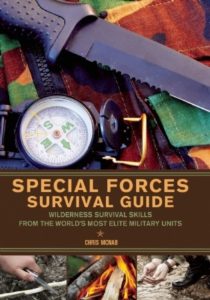

Hello and welcome to what I hope will be a long running and helpful column for the disabled community. There will be some inconvenient truths revealed and discussed, along with ideas and helpful web resources cited.
A bit about me. I live in Earthquake Faults, Nevada, am a non-service connected veteran (NSC), and an incomplete paraplegic, but am studying for my finals! I have Primary Progressive MS, and did a bout with prostate cancer, with the treatment leaving me in the state I’m in, as well as being temperature sensitive (heat and cold) and photosensitive due to medications. About the last statement- it was a 50-50 chance that things would go south, I knew this going in and made my choices.
Unabashed Public Service announcement: Guys age 30 on- get your Christmas Goose during your annual physicals, as a PSA won’t always show a problem!
Prior to diagnosis, I have worked in medical, engineering, architectural, electrical engineering and legal fields, am pro-Second Amendment and pro-privacy, along with being a DIY type person, and was known to go camping 24/7/365 in the desert. My wife is a retired RN who volunteers with the local Red Cross and other disaster response agencies.
The Web as we know it is a wealth of information. It’s great for newsfeeds, for gathering intelligence on various issues after proper sifting and to find what disaster protections exist to help or hinder you, and to source ideas to make your life a bit easier before and during disaster strikes.
Now for anyone not bound by physical limitations, bugging out is viable, for a lot of us bugging in is going to be the reality that we deal with. Add to that hygiene, especially critical during emergencies, environmental conditions to deal with and getting necessary medications, and if you have a service animal (SA), then the fun(?) truly begins.
I’m sure everyone has read all the bugging out and bugging in lists of necessities. They are good thinking points, but as every disability issue has different needs and necessities combined with basic survival needs, I’ll leave you with the following thing points.
- What is your bugging out and bugging in reality?
- What types of medications do you use and what is their availability and storage conditions?
- What type mobility device do you use? (manual chair, power chair or scooter, crutches, etc.?)
- What type of personal transportation do you use? (adapted van, vehicle with mobility device carrier, etc.)
These topics are complete discussions unto themselves. A serious assessment and realization of their limitations and pluses will be discussed in future columns. As there is no real right, wrong or in between answers, I would ask readers to weigh in on this.
Remember, we are on the bottom of the food chains of disaster response and evacuation, much less any LEO protection.


![Best Concealed Carry Guns In 2025 [Field Tested] Wilson Combat EDC X9S 1](https://gundigest.com/wp-content/uploads/Wilson-Combat-EDC-X9S-1-324x160.jpg)


![Best 9mm Carbine: Affordable PCCs [Tested] Ruger Carbine Shooting](https://gundigest.com/wp-content/uploads/Ruger-Carbine-Shooting-100x70.jpg)
![Best AR-15: Top Options Available Today [Field Tested] Harrington and Richardson PSA XM177E2 feature](https://gundigest.com/wp-content/uploads/Harrington-and-Richardson-PSA-XM177E2-feature-100x70.jpg)
